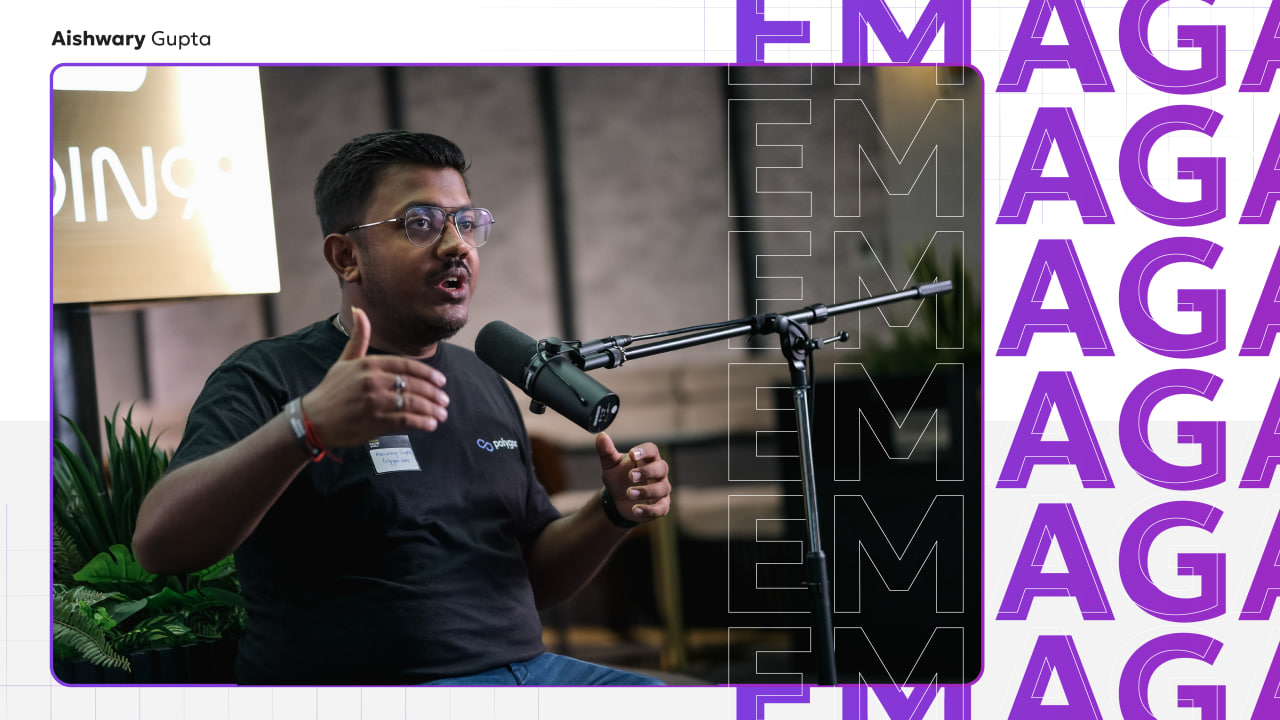
Head of ecosystem BD at Polygon: "Know how to say no to big brands"
Over the past 2 years, Polygon has emerged as a destination for many famous brands such as Starbucks, Nike, Coca-Cola, Reddit... marking a new phase in the mass adoption process for the cryptocurrency market.
"You have to know how to say no" - he shared his experience working with big players in the traditional market. It is necessary to have a team with enough experience and knowledge to find the right direction for Web2 companies and to collaborate to perfection instead of just satisfying partners.

Polygon has a large community of developers with a massive number of Dapps. According to data from Alchemy, the number of decentralized applications on Polygon reached 37,000 in 2022. The network has over 1,000 developers, second only to Ethereum and Solana.
The market has changed a lot since 2021. Despite the events that have caused users to turn away from crypto, Polygon still maintains its position as one of the most vibrant blockchains. In your opinion, what has led to Polygon's success?
- Builder is the most critical core factor. We focus on builders and the success or failure of their projects. If someone builds a project on Polygon, we will help them with business development. That means finding and maintaining relationships with partners and outlining the project's business development strategy.
For many startups, especially in Web3, the product is the project's primary concern. They have yet to understand the importance of marketing because they do not have a marketing or business development team. Therefore, they cannot succeed as expected even though their product is auspicious.

Unlike the XYZ ecosystem, we don't give hundreds of thousands of dollars to projects to encourage them to build on Polygon. Partly because we can't do that when too many applications are building in the ecosystem. Instead, we will give them something more valuable: experience and relationships.
For example, I have a background in working for fintech companies and payment protocols. With that experience, I can help decentralized finance (DeFi) applications deploy on Polygon zkEVM to develop their projects. At the same time, with the blockchain foundation platform, Polygon can connect projects to places they need, like partners or future customers.

These two activities are much more meaningful for the project's development than just "throwing money" at them to build and develop independently. That is also why many projects choose to partner with and get our help.
Especially when a series of large companies in the top 500, top 100 Fortune approach the Polygon ecosystem. The foundation can act as a bridge to connect brands with projects. Currently, we have a dedicated team working on this issue.
That is how we can create benefits for projects while promoting mass adoption for the entire cryptocurrency industry. This is also why many projects choose to go along with and help us.

Considered the flagship in promoting mass adoption for the cryptocurrency market, numerous big names have come to Polygon. Some highlights in 2022 include Reddit social network deploying their digital collection with 5 million users participating in minting, Robinhood deploying Web3 wallets, and Meta, the parent company of Facebook, starting to test digital asset features. All have chosen Polygon as their starting point.
Polygon has become a destination for many famous brands such as Coca-Cola, Starbucks, Nike, Disney... What is the unique point of Polygon that can attract those giants?
- Similar to developing the network ecosystem, the Polygon team understands what is necessary for their partners and provides them with beneficial features. At the same time, during that time, we know when to say "no".
When a big name comes, you will try to meet their needs. At this point, you will unthinkingly try to satisfy the customer without understanding what they want. The problem starts to arise. Today, you may be able to meet their needs, but tomorrow, another party will do this better, and you will not be able to compete if you continue to chase after your customers. Therefore, when cooperating with big brands, we must maintain an open relationship with them to understand what both sides have and what they need.

Last week, we had a conversation with BlackRock, one of the world's largest asset management funds. They are trying to tokenize their entire ecosystem on Polygon. On the side of Polygon, we see solutions to promote this process and create more utility in the payment field.
They do not understand Web3 like we do, but they have expertise in Web2. That is when the real collaborative relationship is effective when we share ideas and expand the scope of influence.
Regarding development plans, we always focus on infrastructure, deployment partners, and our customers.
Ethereum will have many EIPs (Ethereum Improvement Proposals), proposing improvements to bring new features to the network. Similarly, at Polygon, we have many PIPs (Polygon Improvement Proposals). We will improve at the protocol level.
Next is the assembly team. Typically, companies outside the Fortune 500 list rarely have their development team, especially in the Web3 space. That's when the assembly team comes in to help these companies easily apply blockchain technology. Polygon will continue to support and help assembly teams to develop. When a customer needs us, we will provide information and connect them.

Even though we have achieved many successes in our 6 years of operation, Polygon continues with new development plans. In 2024, the project aims to complete the Polygon 2.0 goal of providing diverse services to meet the needs of all user types.
Polygon deployed Polygon ZK-EVM in March. However, recently, Polygon Labs announced that they would convert the Polygon POS chain to Polygon Validium, running in parallel with ZK-EVM. Will there be a conflict of interest between the networks?
- The core point lies in the design and features of the different types of rollups.
For example, with optimistic rollups like Arbitrum or Optimism, you assume that all transactions on the chain are correct. They will not directly verify them. However, when assets are transferred from layer 2 back to layer 1, they need to go through a "7-day challenge period" to verify the accuracy of the transactions. That is the biggest issue with optimistic rollups. On the other hand, with zero-knowledge rollups (ZK-rollup), the network will verify each transaction. This increases costs but also means that security is ensured.
-IzzqHDiX3tDkIoMK.png)
Therefore, the Polygon ZK-EVM network is necessary for activities that require high security, as transactions and data are stored on-chain and secured by algorithms. Meanwhile, Polygon PoS will be converted to Validium proof, meaning that data will be stored off-chain while the calculation process is still done on-chain. Therefore, Polygon Validium will achieve a different level of security than ZK-EVM. In return, transaction costs and speed will be significantly optimized.
With different advantages and disadvantages, Polygon ZK-EVM will focus on high-security financial activities, being the home for decentralized finance (DeFi) applications. On the other hand, Polygon Validium will be suitable for activities such as gaming and NFT, which require flexibility and user experience.
Currently, Polygon 2.0 has networks for DeFi, Gaming, and NFT. In the future, does the project team plan to develop other networks for other purposes?
- No. Polygon 2.0 has 3 components: Polygon ZKEVM, Polygon Validium, and Polygon SuperNet. That is what is necessary. We are working to solve the two issues of composability and liquidity.
Composability allows developers to quickly and efficiently assemble applications and protocols to create more diverse and complex products. We have created an optimal environment for this.
The second issue is liquidity. There are more and more networks being built alongside appchains and layer 2. Besides the benefits of scalability, the biggest problem is liquidity fragmentation. Similarly, Polygon has Polygon PoS, Polygon ZK-EVM, and over 120 appchains on the SuperNet. They cannot all be connected to each other, and liquidity is only contained within each chain. This will be a challenging problem to solve.

Therefore, we are trying to create a chain that can aggregate liquidity through a liquid hub model on Polygon 2.0. Specifically, we connect all chains through internal bridges to simplify and speed up asset movement. When there is a liquidity need for transactions, the blockchains in the network will send requests to the liquidity hub. After validators validate, liquidity will flow there and be used before returning to the liquidity hub. This will help standardize liquidity and address the future problem when everyone wants to create their blockchain.
Polygon has realized that and provided full solutions for the above issues.
